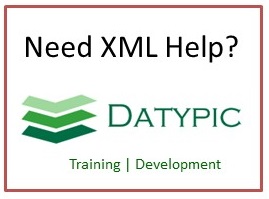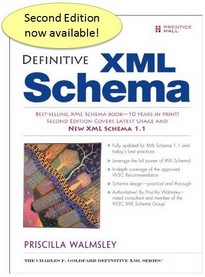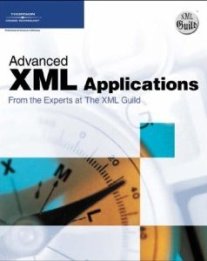rules-subparagraph
Rules are hierarchically structured as clauses, paragraphs, subparagraphs, subdivisions, items,and subitems. The heirarchy follows this order.
Element information
Content
- Sequence [1..1]
- enum [1..1]The enumerator associated with a subdivision or level (e.g., 1. for sections, (a) for subsections). Note: When an enumerator appears as two enumerator (e.g., (a)(2)), the structure is produced with two levels where the second level has an attribute of display-inline="yes-display-inline"
- Choice [1..*]
- textTextual material that follows a header, an enumerator, an enumerator/header pair, or as a cut-in (flush-left) final text after a non-structural element such as a quoted-block, table, graphic, etc.. In appropriations bills, the function performed by the text element is usually performed by the appropriations paragraph element.
- rules-subdivisionRules are hierarchically structured as clauses, paragraphs, subparagraphs, subdivisions, items,and subitems. The heirarchy follows this order.
- continuation-textTextual material belonging to a level, the text follows the sub-level
- subsectionA hierarchical structure of a measure. This level is contained directly within sections. Levels contained within subsections are paragraphs, subparagraphs, clauses, subclauses, items, and subitems. Subsections are normally enumerated with a lowercased alpha character within parentheses (e.g., (a)). After reaching (z), subsections are enumerated with double letters (e.g., (aa), (bb), (cc), etc.).
- paragraphA hierarchical structure of a measure. This level is contained directly with subsections. Levels contained within paragraphs are subparagraphs, clauses, subclauses, items, and subitems. Subparagraphs are normally enumerated with a numeric values within parentheses (e.g., (1)).
- subparagraphA hierarchical structure of a measure. This level is contained directly with paragraphs. Levels contained within subparagraphs are clauses, subclauses, items, and subitems. Subparagraphs are normally enumerated with an uppercased alpha character within parentheses (e.g., (A)). After reaching (Z), subparagraphs are enumerated with double letters (e.g., (AA), (BB), (CC), etc.).
- clauseA hierarchical structure of a measure. This level is contained directly with subparagraphs. Levels contained within clauses are subclauses, items, and subitems. Clauses are normally enumerated with lowercased roman-numeral values within parentheses (e.g., (ii)).
- subclauseA hierarchical structure of a measure. This level is contained directly with clauses. Levels contained within subclauses are items, and subitems. Subclauses are normally enumerated with uppercased roman-numeral values within parentheses (e.g., (II)).
- itemA hierarchical structure of a measure. This level is contained directly with subclauses. Levels contained within items are subitems. Items are normally enumerated with lowercased double characters within parentheses (e.g., (aa)). Once reaching (zz), items are enumerated as (aaa), (bbb), etc..
- subitemA hierarchical structure of a measure. This level is the lowest level represented within a measure and is contained directly with items. Subitems are normally enumerated with uppercased double characters within parentheses (e.g., (AA)). Once reaching (ZZ), subitems are enumerated with triple letters (e.g., (AAA), (BBB), etc.).
- appropriations-major
- appropriations-intermediate
- appropriations-small
- divisionA hierarchical structure of a measure. If present, usually the top-level hierarchical structure, containing titles (structure of legislation) within it. The formatting of a division (structure of legislation) will be according to the rules of the style (such as OLC style or United States Code Style) in effect. The style will control such display issues as the fonts and highlighting used, the margins, and the indentation levels. The style will also control generation of text, for example, the word “Division ” before the enumerator and any punctuation or spacing surrounding or following the enumerator or the header. Accordingly, such punctuation will not be keyed and will not be part of the data.
- subdivisionA hierarchical structure of a measure. If present, usually a top-level hierarchical structure, containing titles (structure of legislation) within it. The formatting of a subdivision (structure of legislation) will be according to the rules of the style (such as OLC style or United States Code Style) in effect. The style will control such display issues as the fonts and highlighting used, the margins, and the indentation levels. The style will also control generation of text, for example, the word “Subdivision ” before the enumerator and any punctuation or spacing surrounding or following the enumerator or the header. Accordingly, such punctuation will not be keyed and will not be part of the data.
- titleA hierarchical structure of a measure, frequently the top-level hierarchical structure inside the body of the measure, or second only to the division (structure of legislation) level. Titles (structure of legislation) and sections (structure of legislation) are the main building blocks of legislation. The formatting of a title (structure of legislation) will be according to the rules of the style (such as OLC style or United States Code Style) in effect. The style will control such display issues as the casing, fonts and highlighting used, the margins, and the indentation levels. The style will also control generation of text, for example, the word “Title ” before the enumerator and any punctuation or spacing surrounding or following the enumerator. Any necessary casing, punctuation, and spacing following the header will also be generated for display or printing. For example, when a title (structure of legislation) follows OLC style, the display or print system will generate a uppercased centered header with no punctuation following. Note: An appropriations account is generally described by a title (structure of legislation), but in some instances the account (structure of legislation) element should be used, e.g., when several accounts are grouped together within “General Provisions” which is considered the title (structure of legislation). Note: In these DTDs, a <title> does not refer to a subcaption or heading. The element <title> is a very specific subdivision of a legislative measure. The element header and subheader should be used to describe a headings or subcaptions.
- subtitleA hierarchical structure of a measure, usually the first major subdivision of a title (Structure of Legislation). T he formatting of a subtitle (structure of legislation) will be according to the rules of the style (such as OLC style or United States Code Style) in effect. The style will control such display issues as the fonts and highlighting used, the margins, and the indentation levels. The style will also control generation of text, for example, the word “Subtitle” before the enumerator and any punctuation or spacing surrounding or following the enumerator. Any necessary casing, punctuation, and spacing following the header will also be generated for display or printing. For example, when a subtitle (structure of legislation) follows OLC style, the display or print system will generate an uppercased centered header with no punctuation following. Where the style of a subtitle (structure of legislation) is different from the preceding and possibly following titles (structure of legislation) or subtitles (structure of legislation), for example, in situations where the subtitle (structure of legislation) is the title (structure of legislation) of another measure, the style attribute can be used to override the normally designated style. Note: In these DTDs, a <subtitle> does not refer to a subcaption or secondary heading that adds additional material to the heading of a title, section, figure, etc. The element <subtitle> is a very specific subdivision of a legislative measure. The element subheader should be used to describe a secondary heading or subcaption
- chapterA hierarchical structure of a measure. The formatting of a chapter (structure of legislation) will be according to the rules of the style (such as OLC style or United States Code Style) in effect. The style will control such display issues as the fonts and highlighting used, the margins, and the indentation levels. The style will also control generation of text, for example, the word “Chapter ” before the enumerator and any punctuation or spacing surrounding or following the enumerator. For example, a chapter (structure of legislation) in OLC style will have a generated em-dash following the Enumerator. Accordingly, such punctuation will not be keyed and will not be part of the data. Any necessary punctuation and spaces following the header will also be generated for display or printing. For example, when a chapter (structure of legislation) follows OLC style, the display or print system will generate a centered header with no punctuation following.
- subchapterA hierarchical structure within a measure, typically the first major subdivision of a chapter (structure of legislation). The formatting of a subchapter (structure of legislation) will be according to the rules of the style (such as OLC style or United States Code Style) in effect. The style will control such display issues as the fonts and highlighting used, the margins, and the indentation levels. The style will also control generation of text, for example, the word “Subchapter” before the enumerator and any punctuation or spacing surrounding or following the enumerator. Any necessary casing, punctuation, and spaces following the header will also be generated for display or printing. For example, when a subchapter (structure of legislation) follows OLC style, the display or print system will generate a centered uppercased header with no punctuation following.
- partA hierarchical structure of a measure. The formatting of a part (structure of legislation) will be according to the rules of the style (such as OLC style or United States Code Style) in effect. The style will control such display issues as the fonts and highlighting used, the margins, and the indentation levels. The style will also control generation of text, for example, the word “Part ” before the enumerator and any punctuation or spacing surrounding or following the enumerator. Accordingly, such text will not be keyed and will not be part of the data. Any necessary casing and spacing following the header will also be generated for display or printing. For example, when a part (structure of legislation) follows OLC style, the display or print system will generate a centered header with no punctuation following.
- subpartA hierarchical structure of a measure, typically the major subdivision of a part (structure of legislation). The formatting of a subpart (structure of legislation) will be according to the rules of the style (such as OLC style or United States Code Style) in effect. The style will control such display issues as the fonts and highlighting used, the margins, and the indentation levels. The style will also control generation of text, for example, the word “Subpart” before the enumerator and any punctuation or spacing surrounding or following the enumerator. Any necessary casing, punctuation, and spacing following the header will also be generated for display or printing. For example, when a subpart (structure of legislation) follows OLC style, the display or print system will generate an uppercased, centered header with no punctuation following.
- sectionA hierarchical structure of a measure. This is usually the top level contained with the legislative body. Levels contained within sections are subsections, paragraphs, subparagraphs, clauses, subclauses, items, and subitems. Sections are normally enumerated with a numeric value followed by a period (e.g., 1.). The formatting of a section (structure of legislation) will be according to the rules of the style (such as OLC style or United States Code Style) in effect. The style will control such display issues as the fonts and highlighting used, the margins, and the indentation levels. The style (and the numerical order of the section (structure of legislation) within its containing structure) will also control generation of text, for example, the word “Section”, “Sec.”, or “§” before the enumerator and any punctuation or spacing surrounding or following the enumerator. In so doing, the style will ensure that a period always follows the abbreviation “Sec”, but not the word “Section”, and that the appropriate punctuation follows the enumerator. Accordingly, such punctuation will not be keyed and will not be part of the data. Any necessary punctuation and spaces following the header will also be generated for display or printing. For example, when a section (structure of legislation) follows OLC style, a generated period will follow the header.
- legis-commentThe legis-comment element defines a comment to the legislative language.
from subst. group legis-structures
Attributes
| Name | Occ | Type | Description | Notes |
|---|---|---|---|---|
| id | [1..1] | xsd:ID | Unique name for the element so that it can be referenced.Provides the name of a particular element, so it can be distinguished from all other elements of the same type, for example, naming one particular section (structure of legislation) so that applications can point to it and distinguish between it and the other perhaps hundreds of other sections (structure of legislation) in the same document. | from group unique-id |
| changed | [0..1] | Anonymous | Has this ENTIRE structural element (such as a Section (structure of legislation), Title (structure of legislation), etc.) been added or deleted?Note: Use the <added-phrase> and <deleted-phrase> elements for changes inside a structure that are less than the full structure.This attribute is used to mark entire structures that should be made typographically distinct because they have been added to or deleted from a measure. In contrast, the added phrase <added-phrase> and deleted phrase <deleted-phrase> elements are used to indicate changes within a structure that are less than the full structure, sometimes as little as a word, a number, or a few letters.A structure (such as a title or a section) that has been marked as changed using this attribute is usually presented in a different typographic style to indicate the change. Material that has been inserted (added) is typically in italics. Material that has been removed (deleted) is typically struck through. | from group rules-structure-attributes |
| committee-id | [0..1] | xsd:anySimpleType | The id of a working subdivision of a chamber, which prepares legislation or conducts investigations | from group rules-structure-attributes |
| reported-display-style | [0..1] | Anonymous | from group rules-structure-attributes | |
| indent | [0..1] | Anonymous | Mechanism permitting an override of the indentation typically used or a way to specify indentation level for a structure. The values are relative (up1 through up7 and down1 through down7) and absolute (the structure level can be specified such as subsection). | from group rules-structure-attributes |
| display-inline | [0..1] | Anonymous | The display-inline attribute provides a mechanism to pull levels together in their display. Typically, this will be used when the enumerator needs to be combined (e.g., (a)(1)). Possible values are yes-display-inline and no-display-inline. | Default value is "no-display-inline". from group display-inline-model |
Used in
- Anonymous type of element rules-paragraph
- Anonymous type of element quoted-block via extension of quoted-block-model
- Type quoted-block-model


